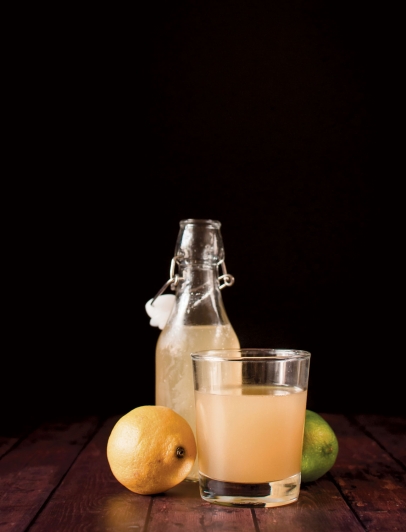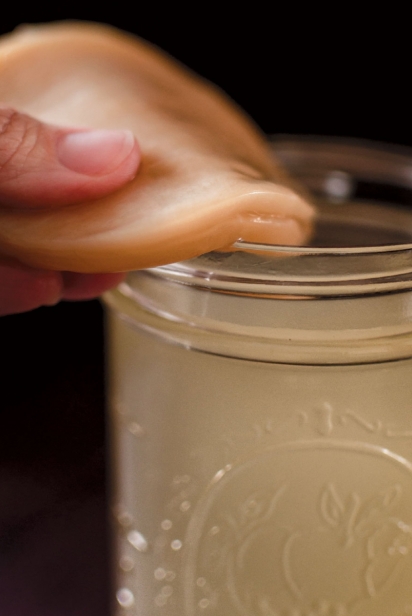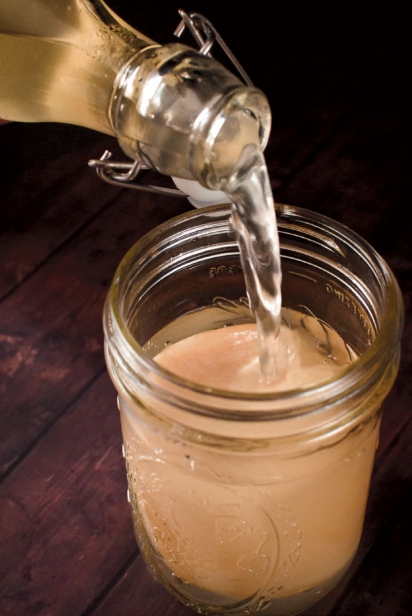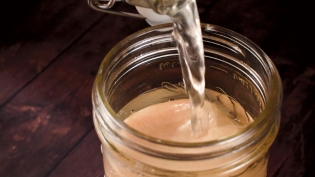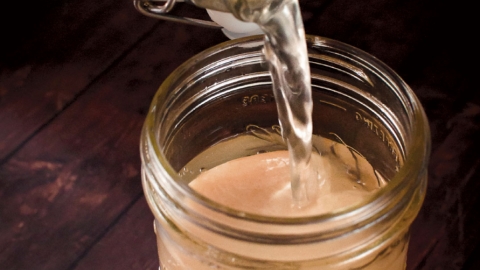Fizz Factor Making Kombucha with The Kombucha Co.
Brew up your own kombucha for health and fun
It seems that we’re all talking about a virus lately, but let’s not forget about bacteria—particularly the good ones! More and more research confirms that eating fermented foods can encourage helpful bacteria growth in our digestive systems that can keep us healthy, not in the least by supporting our immune systems. Kombucha, a fizzy fermented tea, is a tasty way to send some live cultures down the hatch, and while there are many ready-made varieties at most grocery stores, channeling your inner mad scientist and making it yourself is serious fun. A word of caution, though: Kombucha brewing can become addictive. Tart and effervescent and infinitely customizable, kombucha might seem intimidating, but it’s simple once you have the right materials. That’s where Trent Kaminsky, owner of The Kombucha Company, comes in. The Kombucha Company offers ready-to-drink kombucha as well as starter kits to help DIYers create their own.
Starting out in a spare room of Kaminsky’s house, The Kombucha Company now has a storefront located on Jackson Street in Richmond. Kaminsky started out focusing on pre-made kombucha, but once he realized that there was a demand for home-brewing materials it was a “nobrainer” to start providing kits. Starter kits make up a significant portion of his business now, he says, and have allowed him to continue to grow the company while sales for pre-made kombucha are down due to COVID-19.
Most kombucha-making kits available online contain, at a minimum, starter tea and a SCOBY (Symbiotic Culture Of Bacteria and Yeast), the living bacteria that start the kombucha process. More elaborate kits can include jars, pH test strips and other items a new brewer might find helpful. While the SCOBY usually gets all the attention, Kaminksy says the starter tea is the most important ingredient for your new batch. “Starter tea is just original kombucha that’s more mature, that’s fermented a little longer, a little bit more vinegary. But truly, it’s the starter tea that grows kombucha, because in that starter tea is all the good, living probiotics and cultures that will grow a SCOBY.”
The starter tea’s acidity is important for making sure that the kombucha brews correctly: With a low pH, “the good bacteria are going to outwork the bad bacteria and you’re going to have a healthy kombucha brew,” says Kaminsky.
But the SCOBY is still an iconic and useful part of the process. It’s mysterious and alien, and while kombucha can be brewed with starter tea alone, who’d want to miss out on playing with this strange gelatinous thing? A mold-free SCOBY developing at the top of your kombucha jar is a great indicator that the brew is going as it should. It supplements the starter and can be reused batch after batch, growing bigger each time. In fact, you’ll have to start peeling off layers once it starts crowding out the actual kombucha. Kaminsky cuts off thick parts of his mature SCOBYs like pizza slices, often adding them to the compost pile, putting the bacteria in the SCOBY to good use.
Kombucha brewers can get inventive with how they make use of extra SCOBY. Plants that thrive in acidic soil—like azaleas, caladiums and many vegetables—would love to have some sliced-up SCOBY added to their soil. A healthy SCOBY is perfectly edible and can be puréed and added to smoothies or salad dressings. You could even eat it straight! Kaminsky says it tastes a little like lemon, but—fair warning— older SCOBY can be tough to chew.
Once the kombucha is brewed, it’s time to flavor it—or not, if you enjoy the tart, vinegary flavor of plain kombucha. Infusing with fruits, herbs and spices offers unlimited flexibility of flavor combinations. Kaminsky recommends using juice or concentrates for stronger flavor.
Just remember to set your SCOBY and some plain kombucha aside before flavoring to act as your starter for the next batch; doing so means you can concoct a fresh flavor each time. And since you’re already set up for the next batch, why not make more, and why not experiment with some unique flavors? Kaminsky encourages playing around; you might be surprised by what flavors tickle your taste buds.


